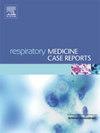用逆行法单侧封闭硅胶支架治疗难治性支气管胸膜瘘:病例报告
IF 0.8
Q4 RESPIRATORY SYSTEM
引用次数: 0
摘要
一名患有肺癌的男性患者(85 岁)接受了基底段切除术。随后,他因支气管残端瘘而接受了紧急开窗胸廓切开术。患者的全身状况和营养状况有所改善,但瘘管并未自然闭合。因此,患者接受了瘘管闭合手术,使用了支气管内渡边插管、聚乙二醇酸片和 N-丁基-2-氰基丙烯酸酯。九个月后,瘘管扩大。用纱布加压治疗漏气,但效果不佳,患者无法排痰或说话。将外径为 9 毫米的直型硅胶支架的一侧封闭,然后将支架从瘘管插入,封闭的一侧位于顶端。将 L 型支气管内渡边拉钉放入支架管腔以加固支架。瘘管漏气明显减少,呼吸和排痰更加顺畅。使用单侧闭合硅支架逆行闭合支气管瘘可有效治疗巨大的难治性支气管瘘。本文章由计算机程序翻译,如有差异,请以英文原文为准。
Treatment of intractable bronchopleural fistula with a one-side-closed silicone stent using retrograde approach: A case report
A male patient (age: 85 -years) with lung cancer underwent basal segmentectomy. Subsequently, he underwent emergency open window thoracotomy for a bronchial stump fistula. The general and nutritional conditions of the patient improved; nevertheless, natural closure of the fistula did not occur. Therefore, the patient underwent fistula closure using an endobronchial Watanabe spigot, polyglycolic acid sheet and N-butyl-2-cyanoacrylate. Nine months later, the fistula had enlarged. The air leak was treated by applying pressure with gauze; however, this approach was not sufficiently effective, and the patient became unable to expectorate phlegm or speak. One side of a straight-type silicone stent with an outer diameter measuring 9mm was closed, and the stent was inserted into the fistula through the fenestration with the closed side at the tip. The L-sized endobronchial Watanabe spigot was placed into the lumen of the stent to reinforce it. Air leak from the fistula was significantly reduced, making breathing and expectoration easier. Retrograde closure of a bronchial fistula using a unilaterally closed silicon stent can be an effective treatment for large, refractory bronchial fistulas.
求助全文
通过发布文献求助,成功后即可免费获取论文全文。
去求助
来源期刊

Respiratory Medicine Case Reports
RESPIRATORY SYSTEM-
CiteScore
2.10
自引率
0.00%
发文量
213
审稿时长
87 days
 求助内容:
求助内容: 应助结果提醒方式:
应助结果提醒方式:


